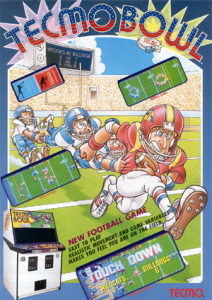 Sports games have come a long way since the days of the Atari 2600, when no-named stick figures were the ones performing the heroics on the screen rather than the highly detailed character models of the pros we idolize.
Sports games have come a long way since the days of the Atari 2600, when no-named stick figures were the ones performing the heroics on the screen rather than the highly detailed character models of the pros we idolize.
Here’s a list of the games that paved the way for the ultra-realistic and great looking games we play today.
In no particular order:
WCW/nWo World Tour- Sure, professional wrestling isn’t considered a sport, but millions of people around the world love it. Millions more have bought wrestling titles over the past 20 years as well. World Tour was AKI games’ masterpiece and aside from having over 15 of your favorite wrestlers at the time and all their signature moves, the game featured an extensive, but incredibly simple control scheme that every wrestling game afterwards [that wasn’t developed by AKI] has tried to copy and has failed miserably at. Even after over a decade since its release, it’s still a cult favorite.
RBI Baseball- The first baseball game to feature real players, RBI baseball had simplistic gameplay that allowed anyone and everyone to join in on the fun. The different pitching styles for some of the relievers [I’ll always remember Jesse Orosco] made it memorable as well.
NHL 2K- Sega broke the mold when they went out their way to make a great-looking and realistic hockey game for the Dreamcast in 1999. The only problem was they did little more to continue to further the franchise over the next eight years, giving Electronic Arts’ NHL series the fuel and passion they needed to get to where they are today. There is no doubt that NHL 09 is the greatest hockey game ever created, but without NHL 2K, it’s scary to think of where the world of hockey video games would be today.
Punch Out- Despite featuring a wild and crazy troupe of characters, this game proved that boxing games could be done and done well. Before its release, the genre was tiny, now it’s one of the most popular in the industry. All thanks to a midget from the Bronx with green boxing gloves.
NBA Jam- Still the best arcade basketball game available, no offense to the NBA Street series, NBA Jam was a master thief of quarters during the ’90s. Combining the best players from every NBA team, a horde of secrets and great gameplay, NBA Jam had it all and as a result, has aged remarkably.
Tiger Woods 07 [Wii]- While it’s only three years old, this game proved that golf could be more than a gimmick on the Wii. Using the wii-mote to swing with a type of precision that vastly outweighs what Nintendo produced in Wii Sports the year before. Each year, the game has gotten better as well, as this year’s version of the game is arguably the best golf game ever created.
Tecmo Bowl- Arcade football at its finest. Fast and fun, Tecmo Bowl makes up for a small amount of options by providing nonstop thrills, a notion future sports titles have copied time and time again. Add in real players on an eight-bit system and it’s easy to see why this game was so influential.
John Madden- Add the face of one of football’s most recognizable personalities, a top down view and more plays and teams than Tecmo Bowl and you have one of the most successful video game franchises ever. Despite some rough patches in ’90s during the Playstation era, Madden is still the King of the gridiron, thanks to nearly 20 years of hard work and an unmatched desire to innovate.
MLBPA Bottom of the Ninth- This little known gem forced other companies to put more time and energy into their games. Despite not having an MLB license, Konami managed to get the batting stances and deliveries of all the hitters and pitchers they could, making it one of the most detailed games of its time. While the game didn’t sell well, you can bet your rear that the rest of the video game world noticed.
Skate or Die- Before Tony Hawk and the Skate series took over the genre, Skate or Die, for a short time, was the epitome of a good skateboarding game. After being released on the Sinclair ZX Spectrum, Commodore 64, Atari ST, Apple IIgs, Amstrad CPC and IBM Compatibles running MS-DOS in 1989, it was ported over to the NES and spawned a sequel that appeared two years later on that system. It also produced two separate entries for the GameBoy. If that wasn’t enough, it also Electronic Arts’ first internally developed game.


Leave a Reply